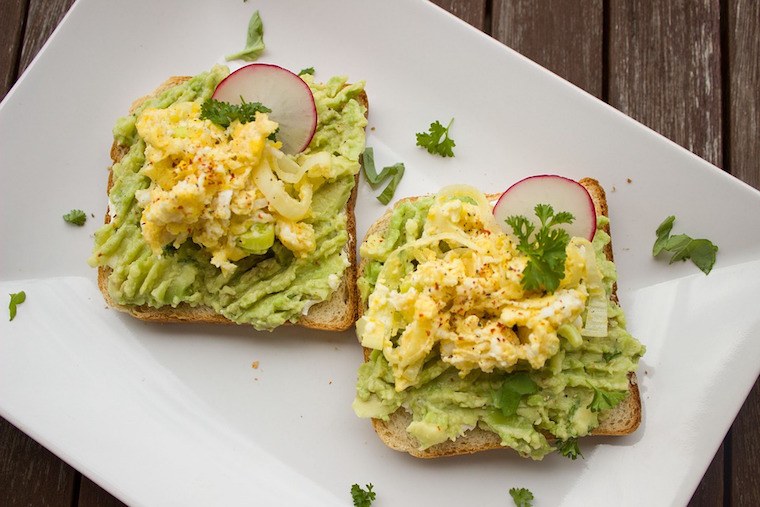The Beginner’s Guide to Cutting Out Sugar
The sweet stuff’s been deemed bad for your body, bad for your skin, bad for your health. And it’s everywhere.
Here’s why sugar's on the Most Wanted list of bad-for-you ingredients, and how to do a three-day detox to see if sugar's affecting you...

The case against sugar
Here's the short Cliff Notes version: Sugar's been implicated in everything from chronic, life-threatening health issues—such as diabetes and heart disease—to skin problems and good old stealthy weight gain.
Health experts like Frank Lipman, MD, have gone so far as to call sugar “the devil”, and the U.S. Food and Drug Administration has recently required brands to better highlight the sugar content on food labels in a bigger way.
That’s because when you eat sugar, your blood glucose levels spike, which results in a burst of energy—followed by a quick crash, Susan Blum, MD, explains. “You can run your blood sugar up and down all day,” she explains, “because when you crash, you go looking for more sugar to pull yourself back up.” Should you try and feed your fatigue with more sugar—which you may have noticed does not work—the vicious cycle makes you feel run down and cranky.

{{post.sponsorText}}
Plus, sugar is extremely inflammatory in the body, warn both physicians. “It triggers the immune system,” Dr. Blum adds. And chronic inflammation is believed to be the basis of pretty much all disease, which is why sugar's become such a problem child of ingredients.

Who should cut out sugar—and how to do a 3-day detox
Not just those at risk for diabetes, says Dr. Blum. Given the effect of sugar on everyone's blood sugar levels and the breadth of illnesses it may trigger, way more people should consider kicking sugar to the curb, she suggests. Especially anyone who regularly struggles with feeling tired, moody, stiff, and/or achy (signs that sugar or inflammation is already having its way with you).
There are a lot of different ways to go about cutting sugar, but Dr. Blum recommends a three-day detox for its simplicity and efficacy. Her general rule? For three days, don’t eat any foods with more than 15 grams of sugar per serving. That means cutting out obvious sugar sources, like soda, alcohol, baked goods, and ice cream. But it also includes surprising sugar bombs, like most yogurts, juices, wheat bread, and, yes, even that acai berry bowl you whip up after the gym, Dr. Blum says.
"Don’t go reaching for sugar substitutes. They can trick your body into gaining weight and continue to foster cravings for sweet stuff."
To help you get through, replace sugar with healthy fats. Think avocado, nuts, healthy animal proteins—whatever works for you, Dr. Blum says. “It feels like a wonderful, almost ‘cheating’ thing to eat healthy fat,” she adds, but it’s really not—so go ahead and enjoy that guacamole.

The honest truth on how you'll feel on a sugar detox
Prepare for the likelihood that as your body adjusts to its new sugar-free reality, you’re going to feel like crap. (Sorry! We didn't want to sugar-coat that news either.)
“It takes three days to get through it, and it feels rough. I’m thinking of one patient who told me, ‘I cried for three days,’” Dr. Blum says. “People don’t realize it has that kind of power over you, and they really detox. They get achy. They get irritable.”
The more addicted to sugar you are, the worse those three days will be, Dr. Blum warns, with lots of cravings and headaches. But after that things just kind of…lighten.

Then, the heavens open after a sugar detox
Okay, we're exaggerating. But so many people swear they feel ridiculously good afterward. Why? If it really is sugar that’s driving your fatigue, mood swings, and so on, you should start to feel better immediately, confirms Dr. Blum. (If not, it’s time to figure out what else could be going on, she says, but she recommends sticking with a low-sugar diet anyway, because of all the other health benefits a low- or no-sugar lifestyle bestows.)

How to live a sweet life on less sugar
After three days, you can move into maintenance mode, which means reading labels super carefully so you generally stick to that no-more-than-15-grams-of-sugar-per-serving rule. (Ideally consumed with protein to slow its absorption and therefore decreasing the likelihood of a blood-sugar spike.)
And don’t go reaching for sugar substitutes, Dr. Blum says. They can just trick your body into gaining weight and continue to foster cravings for sweet stuff.
The cool thing about giving up sugar is that its effects are super obvious and long-lasting. You really should just kind of feel better overall. “It’s an eye-opening experience,” Dr. Blum says. “So many things you’re experiencing are because of sugar.”
Originally posted August 26, 2016. Updated May 17, 2018.
What to eat for dessert? These frozen desserts give you an energy boost (instead of a sugar high). Or try these five-ingredients-or-less, low-sugar treats.
Loading More Posts...